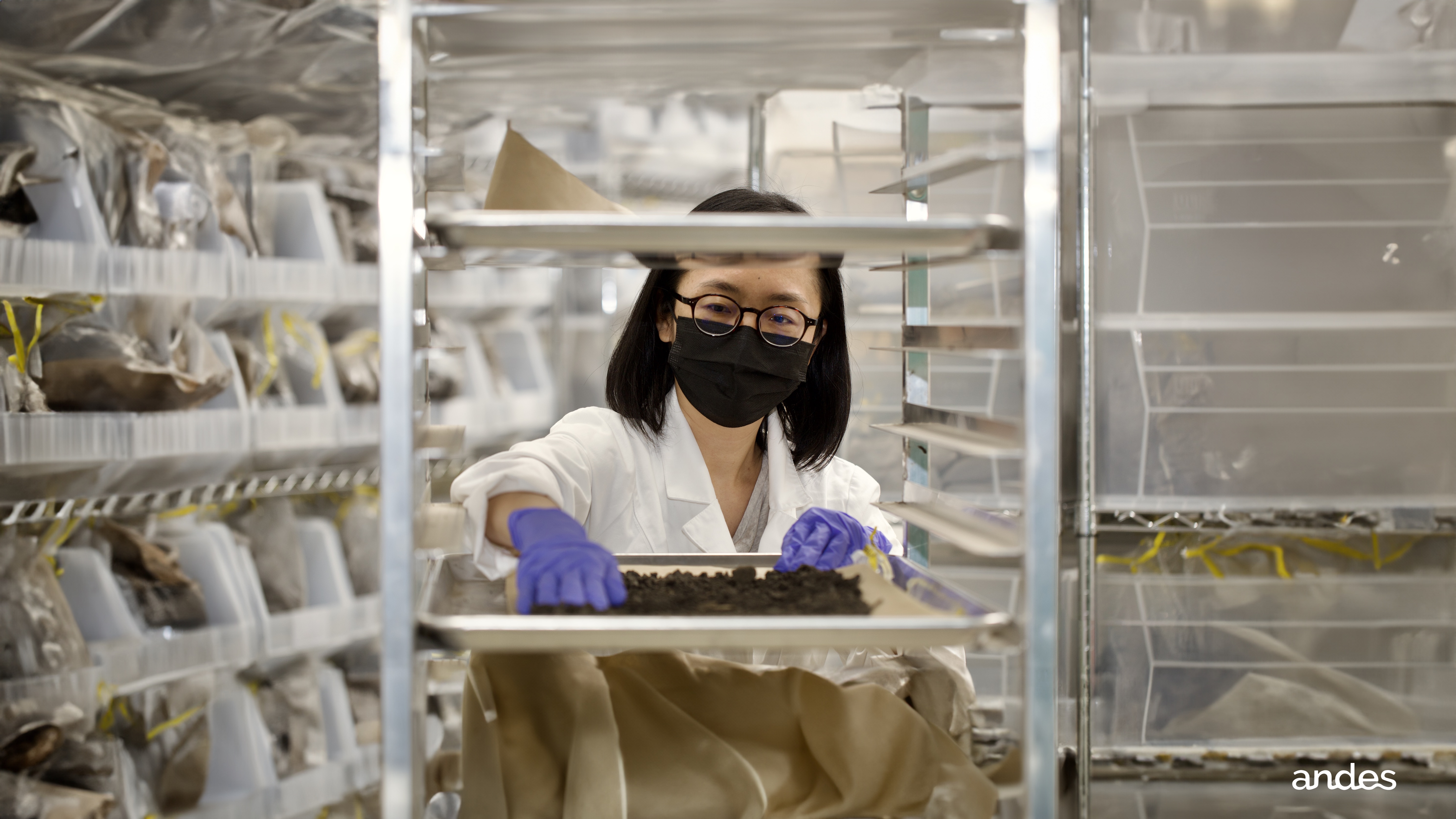Andes Microbial Carbon Mineralization
Applying microorganisms alongside crop seeds to accelerate the natural mineralization of atmospheric CO₂ in soil
Andes applies natural beneficial microorganisms into soils alongside crop seeds. These microbes grow with the crop roots and accelerate the natural mineralization of atmospheric CO2. The resulting stable carbonate minerals are then securely and durably stored in the soil for thousands of years. Andes directly measures the accumulation of these carbonate minerals in soils in order to quantify CO2 removal.
Aside from removing CO2, this process provides important co-benefits for crops and farmers, including guaranteed same-season cash payments. This novel carbon removal technology presents itself as both scalable and cost-effective, as it can be integrated easily into existing agronomic practices. The Andes team has already deployed this technology on 50,000 acres of farmland across the US Midwest, with plans to expand to South America and Africa—improving climate and community outcomes with every additional acre.
To ensure verifiability, Andes has developed an ISO methodology in collaboration with EcoEngineers. The methodology has been reviewed by renowned experts in biogeochemistry, soil science, agriculture, and carbon markets and is currently under validation by an accredited auditor.
Project location
Technology and mechanism
Project certifications
Certifier
Not applicable
Project registration date
Crediting period term
Project methodology
Microbial Carbon Mineralization Version 1.01
Project design document (PDD)
PDD: Andes Microbial Carbon Mineralization
Current verifier of project outcomes
Earthood Services Private Limited
Project details








